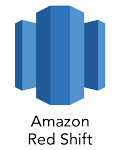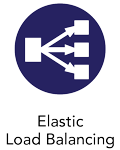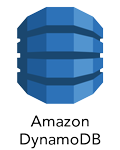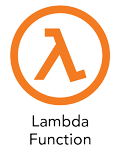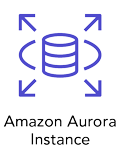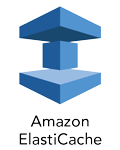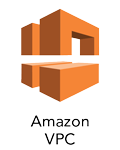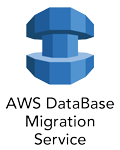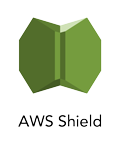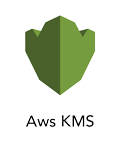Course Description
What Is AWS (Amazon Web Services)?
Amazon Web Services (AWS) is a secure cloud services platform, offering computing power, database storage, content delivery, and other functionality to help businesses scale and grow. Explore how millions of customers are currently leveraging AWS cloud products and solutions to build sophisticated applications with increased flexibility, scalability and reliability.
Why AWS?
AWS is the new normal in today's world because most companies are transitioning from in-house databases to Cloud environments. One of the most challenging steps in the transition stated above is the transfer of data in and out of cloud environment. AWS solves this problem by providing a number of services for moving data, where each solution offers various levels of speed, security, cost and performance.
Skills Covered

Tools and Technologies



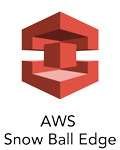

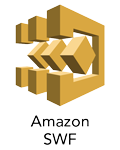
Program Highlights




Why ExcelR






Course Curriculum
AWS solutions Architect
- What is cloud ?
- Services offered by different cloud providers
- What is AWS ?
- AWS - The World Largest Cloud provider
- Different services offered by AWS
- Introduction to AWS S3 , EC2,EBS,AMI
- Concept of Auto Scaling and Its Importance
- How to create an AWS account ?
- How to launch a VM in AWS ?
- What is AWS Storage ?
- Storage architecture of S3 buckets
- Concepts of Data Encryption
- Different Objects in S3 ,metadata and storage classes
- How to launch EC2 Instance ?
- How to create the S3 bucket
- Uploading Objects to the S3 bucket
- Hosting an Website using S3
- What is Region ?
- What is availability Zones ?
- Pre EC2 and EC2 instance Types
- Procedure for launching AWS EC2 Instance
- Introduction EBS
- EBS Volume Types
- What is meant by EBS Snapshots
- Introduction to EFS
- EC2 Pricing
- How to launch EC2 Instance ?
- Conditions to be take care while launching EC2 Instance
- What is meant by load balancer?
- What is Elastic Load Balancer?
- Load Balancer Architecture
- What is Autoscaling ?
- What is Horizontal and vertical Autoscaling
- How to use Load balancer with Auto Scaling?
- What is DNS and How it works ?
- Amazon Route 53
- How to create an Elastic Load Balancer?
- How to create an Auto Scale Group?
- Integrating ELB with ASG
- Types Of Databases available in AWS
- Introduction to Amazon RDS
- Read Replicas in Amazon RDS
- What is No SQL Database ?
- No SQL service in AWS - DynamoDB
- What si Amazon Aurora
- Design patterns of Amazon Aurora
- Pricing details of Database Services in AWS
- launching a MYSQL RDS Instance
- How to modify the RDS Instance
- How to connect Local DB with RDS
- How to create an Dynamo DB table
- Inserting data in to DynamoDB table
- How to create the Amazon Aurora DB cluster
- What is Amazon Red shift
- Advantages of Red shift
- Pricing of Amazon Red Shift
- What is Elastic Cache
- Benefits of Elastic Cache
- Introduction of Amazon VPC
- Architecture of VPC
- Components of VPC
- network Interfaces and internet gateway
- Security in VPC - Security groups and NACL
- VPC END POINTS
- Introduction to cloud formation
- CloudFormation components
- What is Simple Notification service , how does SNS work
- What is Simple email service , how does SES work
- How to create the VPC
- Creating Security groups
- Why access management
- What is ARN Service (Amazon Resource Name), IAM features
- What is IAM policies
- IAM permision , IAM roles , identity federation
- Introduction to CloudWatch
- Concept of CloudWatch architecture
- cloudWatch Alarms
- cloudWatch logs
- Introduction to AWS lambda , benefits of Lambda ,lambda working
- Integration S3 with lambda
- How to create the Lambda function
- What is Elastic Beanstalk
- Elastic BeanStalk architecture
- What is AWS OpsWorks,AWS OpsWorks Benefits
- Introduction to Cloud Migration
- Virtual Machine Migration
- Migrating databases using Database Migration Service (DMS)
- Creating an Elastic Beanstalk application
- Creating a stack in OpsWorks
- Discussion on AWS Solutions Architect Exam
- Exam Overview and Study Tips
Linux and Shell Scripting
- What is Linux ?
- Linux Basic commands sessions
- creating directories , ls,cat,head,tail commands
- grep,awk,sed commands
- What is Unix shell scripting
- How to parameter the shell script
- How to schedule the shell scripts
Hadoop
- Big Data Curicullam
- Introduction to Big Data
- Big Data and Its Importance
- Simple Architecture of Big Data
- Hadoop 1.0 Architecture
- Hadoop 2.0 Architecture
- Big Data Environments
- Map Reduce Explanation with an example
- YARN Architecture
- Setting Up Cloudera environment
- Sqoop Introduction
- Sqoop Internal Process
- Sqoop Explanation with Example
- Sqoop with Eval
- Sqoop with Split by
- Handson1 - Eval,SplitBy,Basic Import from MySQL
- Sqoop Import Properties
- Sqoop Incremental Import
- Handson2 - Sqoop Incremental Import
- Sqoop Incremental last_Modified
- Handson-3 Sqoop Incremental Append
- Sqoop Job Creation - Basic
- Sqoop Job creating Password file
- Direct Mode
- Sqoop Import using Shell sripting
- Sqoop Handson Session -2
- Sqoop validate Command
- Sqoop Import into Hive table
- Sqoop Import All Tables
- Sqoop Import All Tables Exclude command
- Sqoop Export Introduction
- Sqoop Export Internal Process
- Sqoop Export Incremental load
- Sqoop Export properties
- Sqoop Export Transcationality
- Hive Introduction
- Why HQL
- HQL VS SQL
- Hive Architecture
- Different Types of Hive metastore
- Different ways of Accessing Hive
- Hive Beeline Explanation
- Different types of Execution Engines in Hive
- Hive - Hadoop Integration
- Hive - Tables - Managed and External Tables
- Hive Internal tables Explanation
- How to create the Internal tables
- Hive Internal Table creation on top of Directory
- Loading Data from a File to Hive table
- Hive External tables Explanation
- How to external Tables on dirtectory
- Difference between Internal and External table
- Handson - Internal And External Tables
- Partitions Introduction
- Static Partition - Load and Insert
- Dynamic Partitions Insert
- Handson - Static and Dynamic Partitions
- Hive Sub partitions Explanation
- Handson - Sub partitions
- Bucketing in Hive Explanation
- Bucketing on INTEGER column
- Bucketing on String Column
- Bucketing in Date Column
- Handson- Bucketing
- Bucketing and Partition on Same Table
- Hive Query Optimization
- Hive built In Functions
- Views in Hive
- Hive Sub quires
- SCD Types Explanation in Hive
- Implementation of SCD Type 1 in Hive
- How to remove the duplicates in Hive table
- Hive Serde Properties Explanation
- Hive table creation on parquet
- Hive Table creation on Avro
- Hive table creation on XML files
- Different types of Joins in Hive
- Map side Join In Hive
- Bucket Map Join in Hive
- Sort Merge Bucket Join in Hibe
- Handson - Joins in Hive
- Hive UDF creation
- Handson - Handle Incremental Load in Hive through Views
- Hive Ranking functions
- Concept of Vectorization
- Choosing File format in Hive - Industry based
- Hive MSCK command Explanation
- Hive Advanced commands
- ACID Properties In Hive
- Handson - DML operations in Hive
- ORC vs Parquet Vs AVRO
- Basics of Scala
- Why Scala is called Functional programming
- What is the use of Function programming
- Difference between VAL and VAR
- Data Types of Scala
- Use of UNIT Data Type
- Collection in Scala
- List Collection
- Set collection
- Tuple Collection
- Map Collection
- Range Collection
- Expressions in Scala
- Statements in Scala
- Scala Class Hierarchy
- For Loop
- If loop
- Match Expression
- Wild Card Pattern Matching
- String Interpolation
- Functions in Scala
- Methods and Operations
- Nested Functions
- Variable Args Functions
- Vector collection explanation
- Recursive functions
- Higher Order Functions Introduction
- What is the use of Higher Order functions
- Map Higher Order function
- Filter Higher Order function
- Foreach higher Order function
- Reduceby Higher Order function
- Currying In scala
- Singleton Object on Scala
- How to create a singeton object
- Classes in Scala
- Companion Object and Case Class
- Main method in Scala
- Factory Design Pattern
- Traits in Scala
- How to create traits in Projects
- Options in Scala
- Handling Nulls in Scala
- Spark Introduction
- Why Spark?
- Spark Ecosystem Components
- Spark and mapReduce differences
- Architecture of Spark
- Different ways of process the data in Spark
- Spark Core Introduction
- What is SparkContext?
- what is RDD and its importance?
- what is DAG?
- RDD Lineage
- Concept of resilent
- Lazy transformations
- What is transformation in RDD
- Examples of Transformations in RDD
- What is actions in RDD ?
- Examples of RDD Actions
- Narrow and Wide Transformation
- Setting Up Eclipse IDE
- How to perform word count processing in Spark Core
- Jar creationJar deployment
- Spark Submit Introduction
- Spark Submit Architecture explanation
- Spark Submit - Stages in Spark
- Different modes of Spark Submit
- Spark Submit in Client mode
- Spark Submit In cluster mode
- Spark submit in Standalone mode
- Spark Dynamic memory Allocation of resources
- Difference between Group By Vs ReduceBy
- Concept of Accumulators
- Concepts of Broadcast varibales
- How to Accumulators and broadcast variables acts as a Optimization techniques in Spark
- Repartition
- Coalesce
- Difference between repartition and Coalesce - Real time scenerio
- How to increase the parallelism in spark
- Hands On Document for Spark Core
- Spark Core HandsOn Session -1
- Spark Core HandsOn Session -2
- Concept of Map partition
- Cache Concept In Detail
- Units of Caching
- Different memory Levels in Spark
- Difference between cache vs persist
- Concept of Serialization in Spark
- Spark SQL Introduction
- Components of Spark SQL ?
- Data Source API explanation
- Data Frame Explanation
- Hive Thrift Service in Spark Explanation
- Tungsten Memory management in Spark SQL
- What is SparkSession ?
- Difference Between SparkSession and SparkContext
- What is Data set?
- Advantages of Data set?
- RDD Vs Dataframe Vs Data set
- Dataframe creation from CSV file format
- Dataframe creation from JSON file format
- Dataframe creation from AVRO file format using External Jar
- Dataframe creation from XML file format using External Jar
- Dataframe creation from Parquet File format
- Dataframe creation in spark shell for AVRO , XML using SparkConf property
- Creating a Dataframe from a file (without schema)
- Case class using toDF()
- Create dataframe method with RowRDD and Struct variable
- Create Dataframe using Schema - Seamless Dataframe
- Write Modes in Dataframe
- Dataframe using partitionBy
- Joins in Spark SQL
- Usage of BroadCast Join
- Domain Specific language Operations on Dataframes
- withColumn in Dataframe
- DSL operation - Session 1
- DSL operation - Session 2
- Aggregation in Spark SQL
- Window Aggregations in SparkSQL
- Complex Data processing - Struct Data processing (JSON)
- Complex Data processing - Array Data processing (JSON)
- How to create a Spark UDF ?
- Spark UDF in Dataframes
Technical Essentials
- Introduction to Cloud Computing and History of AWS
- AWS Foundational Services: EC2, VPC, S3, EBS
- AWS Security and Compliance, Identity, and Access Management: IAM
- DNS and Content Delivery Networks
- Monitoring, Auditing and Alerts
- AWS Databases: RDS, DynamoDB
- AWS Management Tools: Auto Scaling, CloudWatch, Elastic Load Balancing, Trusted Advisor
- AWS Pricing, Billing, and Support Services
AWS Developer Associate
- Introduction to AWS
- Core Services
- Accessing AWS Services
- AWS SDKs
- Amazon Elastic Cloud Computing
- Amazon Machine Image
- Amazon EC2 instance IP addressing
- Creating an EC2 Instance
- Converting a PEM Key to a PPK Key (Windows Users Only)
- Connecting to an Instance using SSH
- Getting the EC2 Instance Metadata
- Terminating an EC2 Instance
- EC2 Instance Metadata
- Introduction to Amazon EBS
- Elastic File System
- Difference between EFS and EBS
- Auto Scaling
- Amazon Elastic Load Balancer
- Types of Amazon Load Balancers
- Introduction to Amazon Amazon Simple Storage Service (S3)
- Creation of S3
- Amazon S3 Policies
- Amazon S3 Storage Classes and Pricing tiers
- Amazon S3 Glacier
- Sharing an S3 bucket between multiple accounts
- Backup and DataSync
- AWS Storage Gateway
- AWS Snowball
- Amazon CloudFront
- Overview of Encryption Mechanisms
- Server-Side Encryption with S3 Managed Keys (SSE-S3)
- Server-Side Encryption with KMS Managed Keys (SSE-KMS)
- Server-Side Encryption with Customer Provided keys (SSE-C)
- Client-Side Encryption with KMS Managed Keys (CSE-KMS)
- Client-Side Encryption with Customer Provided Keys (CSE-C)
- Introduction to Databases
- Creating an RDS Subnet Group
- Setting up Security Group Rules for Connecting to the RDS Instance
- Creating a Database Using RDS
- Starting an AWS Systems Manager Session Manager Browser Shell Session
- Connecting to RDS and Creating a Database Table
- Deleting an RDS Database
- Amazon DocumentDB
- Amazon DynamoDB
- DynamoDB concepts
- Amazon ElastiCache
- Introduction to Amazon VPC
- Amazon VPC Components
- IP Addresses
- Elastic Network Interface
- VPCs and Subnets
- Internet Gateways
- Network Address Translation (NAT) Gateway
- Controlling Traffic in Amazon VPC
- Virtual Private Network (VPN) Connections
- Domain Name System (DNS)
- Introduction to Amazon Route53
- Amazon Route 53 Concepts and Terminologies
- Amazon Route 53 Policies and Best Practices
- Amazon Route 53 Costs
- Health checking concepts : DNS failover , End point
- Introduction to Identity and Access Management
- Terminologies in AWS IAM
- Creating an IAM Users and Groups
- IAM Roles and Policies
- Features of IAM
- Assigning role to AWS Services
- Cognito
- Single Sign-On (SSO)
- Multi Factor Authentication
- Key Management Service
- Introduction to Amazon Application Services
- Amazon Simple Queue Service (SQS)
- Benefits of SQS
- Amazon Simple Notification Service (SNS)
- Benefits of SNS
- Amazon SNS vs. Amazon SQS
- Amazon API Gateway
- API Gateway RESTful APIs
- Amazon Kinesis- Video, Data streams and Firehose
- Event Processing
- Introduction to AWS Serverless Services
- Lambda concepts
- Types of monitoring services in AWS
- Introduction to CloudWatch and Benefits
- Proactive resource optimization and Log Analytics
- AWS Billing Metrics
- Introduction to AWS CloudTrail
- Cloudwatch vs CloudTrail
- Introduction to CI/CD
- Code Deploy : Provision, Configure ,Deploy, Scale and Monitor
- Docker and Code Build
- Introduction to Cloud Formation
- Deploy using ElasticBeanstalk
- Amazon Elastic Container Service
- Amazon Elastic Kubernetes Service
Contact Our Team of Experts





